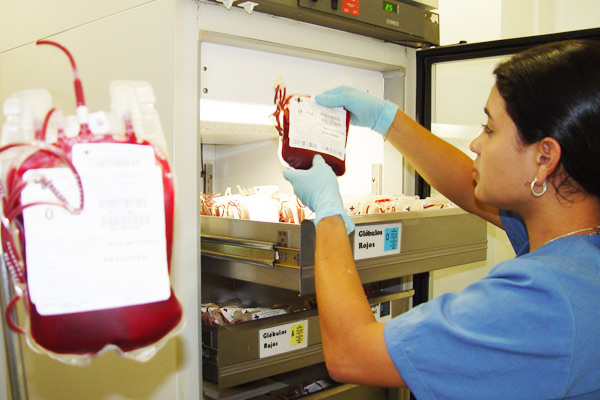Bogotá has a life bank


In Bogota there is a place that works in scientific development, where professionals are trained and biological supplies are provided: blood, human tissues, cells for transplants and, in addition, research is done. This is the “Banco de Sangre, Tejidos y Células Hemocentro Distrital.”
One month ago this Hemocenter became independent from the Ministry of Health and became the District Institute of Science, Biotechnology and Innovation in Health.
This institute is made up of nine founding entities: the Ministry of Health, the four Integrated Health Services Subdivisions of the District, the National universities of Colombia, Los Andes and Javeriana and the National Institute of Cancerology.
“This new Institute is part of the set of actions we have been doing within the framework of the reorganization of the health sector in Bogotá. In this way, the Hemocentro District becomes a pioneering center of health research that generates alternatives for the provision of the service, now in an autonomous way and with the support of important institutions of the country in this field, “said Secretary of Health, Luis Gonzalo Morales.
This institute will seek to increase the responsiveness of the local blood and tissue bank through the District Blood Center, which registers more than 496,660 units of blood collected over the past 15 years, and supplies blood to 90% of patients entering the hospitals of the public network of the city.
The establishment, according to projections of the Mayor’s Office, will also obtain, process, store and distribute human tissues and stem cells, which through tissue banks and umbilical cord have been used to transplant 529 corneas in public and private institutions, and Distributing 172 thousand square centimeters of skin for the care of burned patients.
Finally, the resources they have used come from the general system of royalties, from the science fund, which will be diminished. They are concerned that the Government has decided to reduce its budget to invest in infrastructure. However, with what they have collected so far, they have increased the genetic probabilities of finding cord blood to transplant Colombian children. And the best: the value of these expensive treatments has diminished: “20 milliliters of cells obtained from imported cord blood cost about $25,000. We, with the assembly of this bank, managed to signify up to 90% of this value.”
Prepared by





